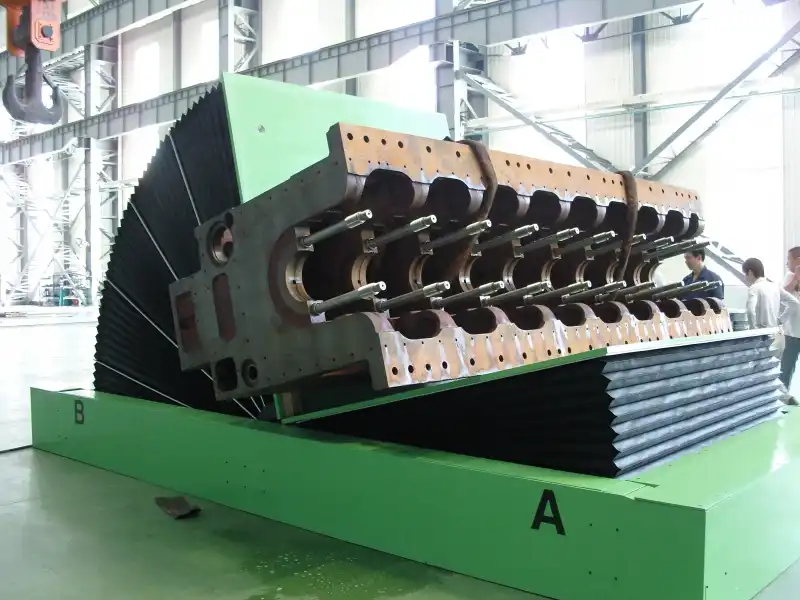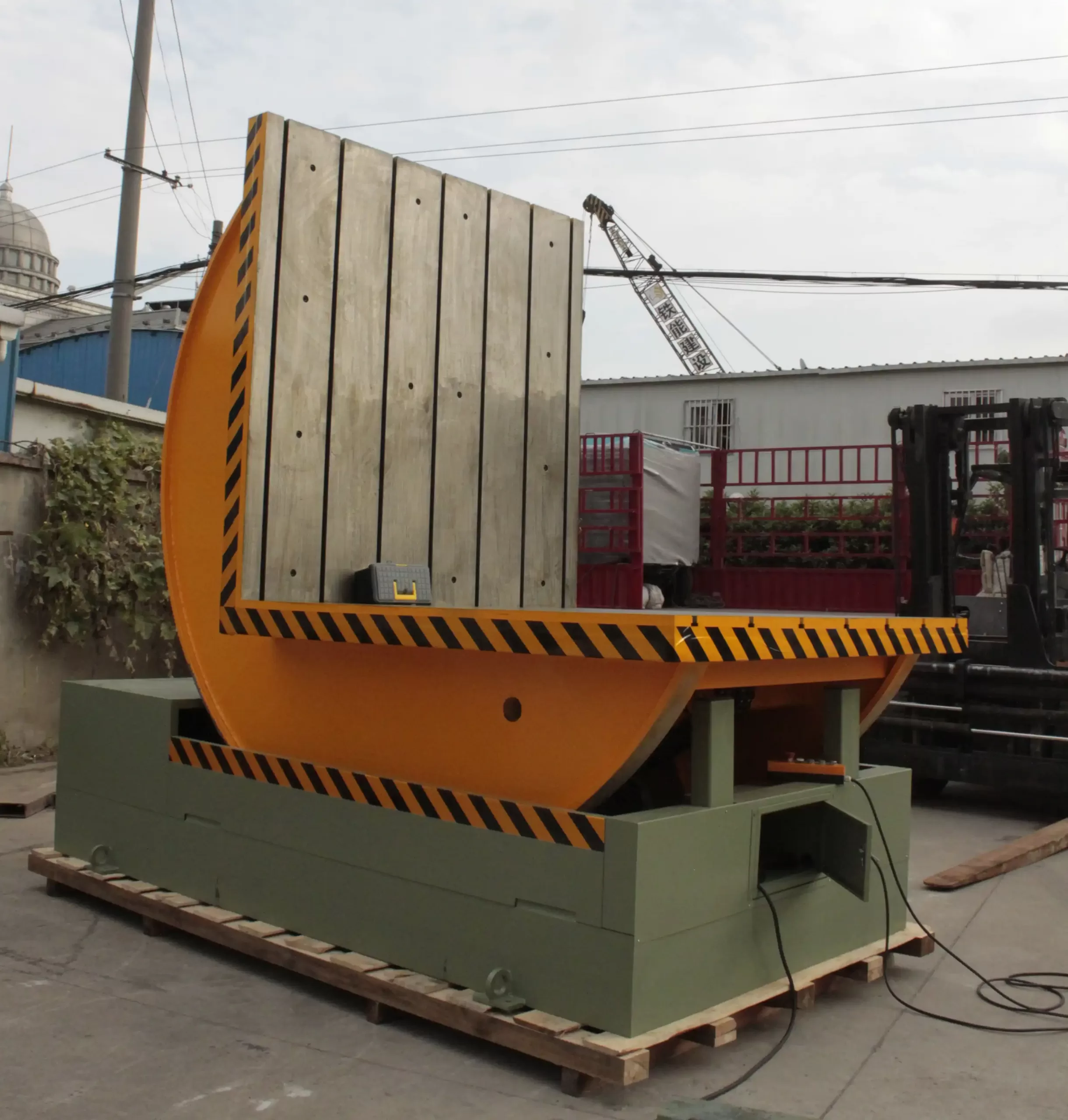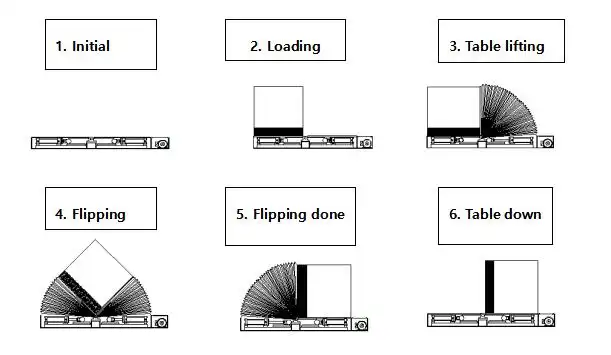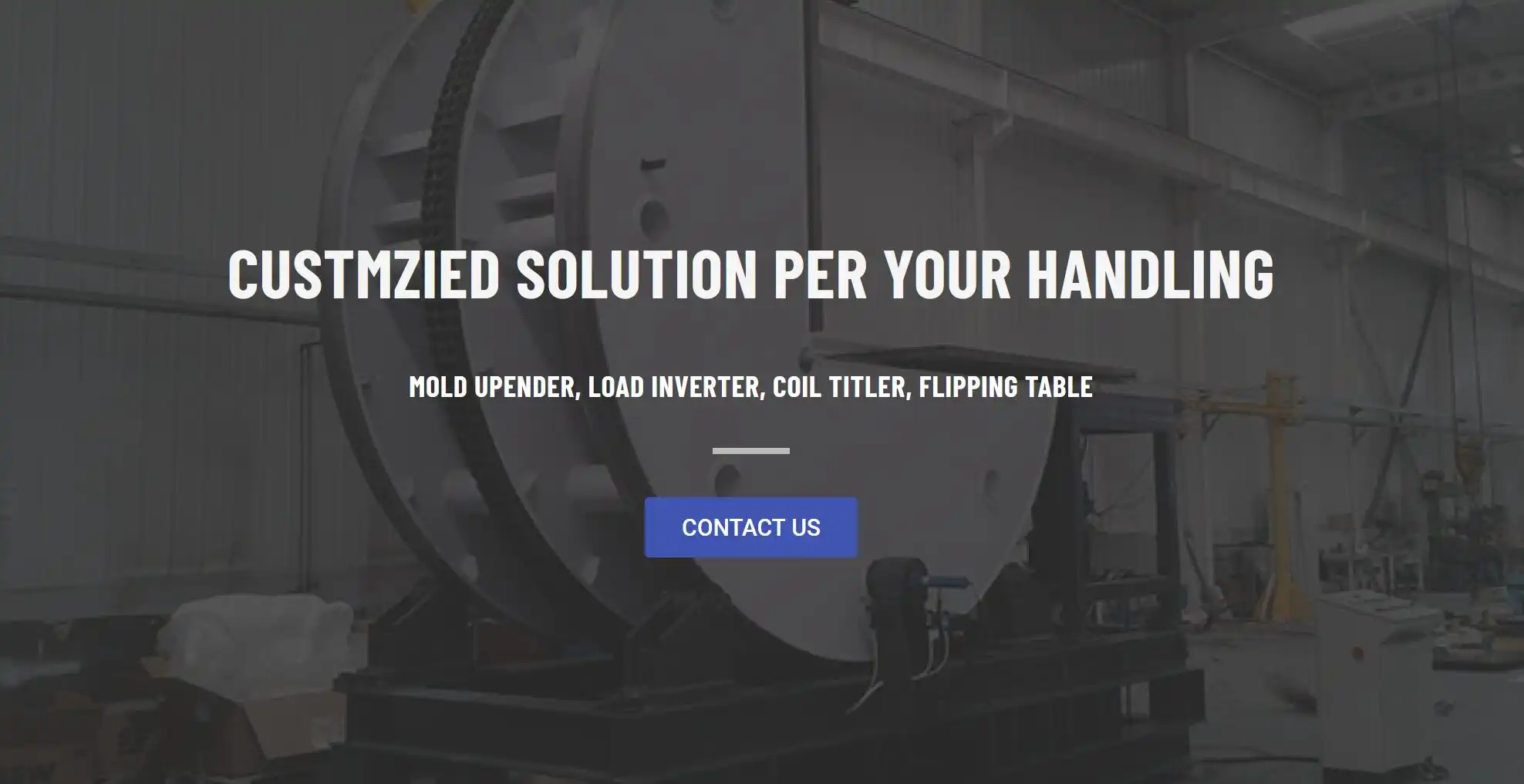Mold Flipper: What Should Malaysian Buyers Ask About Warranty and Service?
Buying a heavy-duty mold flipper is a significant investment for any business in Malaysia. You've spent time analyzing your production needs, calculating the ROI, and choosing a machine with the right specifications. But the purchase is just the beginning. The real test of a supplier comes after the machine is installed. What happens if it breaks down? A machine sitting idle is not just a piece of metal; it's a hole in your production line, causing delays, frustrating your team, and costing you money every single hour. For a manager or owner, this is a nightmare scenario, especially when your service provider is thousands of kilometers away. You need a partner, not just a seller. You can avoid this costly trap by asking the right, tough questions about warranty and service before you ever sign a purchase order.
As a Malaysian buyer, you should ask a potential mold flipper supplier detailed questions covering five critical areas: the exact scope and duration of the warranty, the supplier's verified service response process and times, the availability and location of local or regional technicians, their policy and logistics for spare parts delivery to Malaysia, and the availability of comprehensive operator and maintenance training.

I've been in this industry for a long time, first as an engineer on the factory floor and now as the founder of SHJLPACK. I've seen firsthand how a solid service agreement can make a company thrive, and how a weak one can bring operations to a standstill. The questions I'm about to share are not just a checklist. They are a framework for building a true partnership with your equipment provider. This ensures your investment is protected and your production goals are met. Let's dive deeper into what you need to ask.
What specifics should a warranty for a mold flipper actually include?
You see the words "1-Year Warranty" on a quote and feel a sense of security. But what does that really mean? Many buyers get a painful surprise when they try to make a claim. They discover that the warranty is full of exceptions, the failed part isn't covered, or they are responsible for exorbitant labor and travel costs. This vague promise of a warranty can quickly turn into a source of conflict and unexpected expenses. To avoid this, you need to treat the warranty document not as a marketing feature, but as a critical part of your contract.
A comprehensive warranty for a mold flipper must clearly define the coverage period for different components, explicitly state what is included under the parts and labor coverage, detail the process for making a claim, and list any and all exclusions, such as wear parts or damage from improper use.

A good supplier will have no problem providing clear answers to these questions. A vague or defensive response is a major red flag. Let’s break down the details you need to scrutinize to ensure your warranty is more than just paper.
Differentiating Between Parts and Labor Coverage
The most fundamental aspect of any warranty is understanding how it handles parts and labor. They are not always bundled together. A "parts only" warranty means that if a motor fails, the supplier will ship you a new one, but you are responsible for paying a technician to install it. For heavy machinery like a mold flipper, this can be a complex and expensive job.
You need to ask:
- Does the warranty cover both parts and the labor to install them?
- If labor is covered, does this include the technician's travel time and expenses for an on-site visit to your facility in Malaysia?
- Is there a cap on the number of hours or cost for a labor claim?
A strong warranty, the kind you should look for, will cover parts and labor for all non-wear components. It signifies that the manufacturer stands behind the quality of their entire machine, not just the individual parts.
Understanding Exclusions and Limitations
No warranty covers everything forever. It's crucial to understand the limitations. The most common exclusions are "wear parts" and damage caused by misuse. The problem is that suppliers can have very different definitions of what constitutes a "wear part."
Ask for a specific list:
- Which components are considered "wear and tear" parts and are therefore not covered? (e.g., seals, belts, fuses, hydraulic oil)
- What actions would void the warranty? (e.g., using non-approved spare parts, unauthorized modifications, operating the machine outside its specified capacity).
- Is damage from electrical issues like power surges or sags covered? In many industrial areas, power stability can be a concern, so this is an important point.
The Warranty Start Date
This sounds simple, but it can be tricky. Does the warranty begin on the date of shipment from the factory, or the date of commissioning and installation at your plant in Malaysia? With international shipping and potential installation delays, this can mean a difference of one or two months of coverage. Always push for the warranty to begin on the date of final acceptance (FAT - Final Acceptance Test) at your site.
| Feature | Basic Warranty (Red Flag) | Comprehensive Warranty (Green Flag) |
|---|---|---|
| Coverage | Parts only. Customer pays for all labor and shipping. | Parts and labor included. |
| Wear Parts | Vague definition, many items excluded. | Clearly defined list of excluded wear parts. |
| On-Site Support | Not included or at a very high extra cost. | On-site technician travel and time covered for major failures. |
| Start Date | Date of shipment from the supplier's factory. | Date of successful installation at the buyer's factory. |
| Claim Process | Complicated, slow, requires returning the faulty part first. | Clear, streamlined process with defined response times. |
How can you assess a supplier's after-sales service capabilities from afar?
Every equipment supplier's website promises "excellent customer service" and "24/7 support." These are easy claims to make online. But when your production line is down and you're in Malaysia, you can't afford to discover that their "24/7 support" is just an answering machine or an email inbox that gets checked once a day. You are not just buying a machine; you are entering a long-term technical relationship. How can you be sure the team on the other end has the skills, resources, and commitment to truly support you?
You can effectively assess a supplier's service capabilities by demanding to speak directly with their technical support team, asking for contact information for current customers in your region (Malaysia or Southeast Asia), and requesting a demonstration of their remote diagnostic tools and procedures.

Relying on a salesperson's promises is not enough. You need to do your own due diligence. A supplier who is confident in their service department will welcome this scrutiny. Here are some practical steps you can take to see past the marketing slogans and evaluate their real capabilities.
The Power of Customer References
This is the single most effective way to gauge future performance. Don't just ask for a list of their best customers. Be specific.
- Ask for references in Malaysia or, at a minimum, in the ASEAN region. Someone in a similar time zone and business environment will have a much more relevant experience.
- Ask for a reference who has actually needed to use the warranty or call for emergency service. A customer who has had a problem resolved effectively is a far better testament to good service than one who has never had an issue.
- When you call the reference, ask specific questions: How long did it take to get a response? Was the problem solved remotely or did they need an on-site visit? Were there any unexpected costs?
Evaluate Their Technical Documentation
Before you even talk to a person, look at the quality of their documentation. Ask for a sample of their user manual, maintenance schedule, and electrical schematics.
- Is the documentation clear and easy to understand? Is it available in professional English?
- Does it include a detailed troubleshooting guide? A good guide empowers your own maintenance team to solve common problems quickly without needing to call for support. This is a sign of a supplier who wants to empower their customers.
- Are the maintenance schedules practical and clear, with part numbers listed for common replacement items?
A supplier who invests in high-quality documentation is likely to be just as meticulous about their service.
The Video Call "Interview"
Don't just email your technical questions. Request a video conference call with the head of their after-sales service department or one of their senior engineers. This is your chance to "interview" them.
- Observe how they answer your questions. Are they knowledgeable and confident, or do they need to look up every answer?
- Ask them to walk you through a hypothetical problem. For example, "The mold flipper is not tilting. What are the first three things my team should check?" Their response will tell you a lot about their systematic approach to troubleshooting.
- Ask them to show you their remote support setup. Can they demonstrate how they would connect to your machine's PLC for remote diagnosis?
| Supplier Action | Red Flag (Potential for Poor Service) | Green Flag (Sign of Good Service) |
|---|---|---|
| References | Unwilling to provide, or only provides one "perfect" reference. | Eagerly provides multiple references, including some in your region. |
| Documentation | Poorly translated, vague, lacking a troubleshooting section. | Clear, professional, detailed manuals with troubleshooting and maintenance guides. |
| Technical Team | Salesperson answers all technical questions; engineers are not available. | You can speak directly with experienced engineers who answer questions confidently. |
| Remote Support | "We can help by email." | Demonstrates their remote access software and diagnostic process. |
What are the critical questions to ask about on-site support and spare parts availability in Malaysia?
Remote support and phone calls are great for simple issues. But for a complex mechanical or electrical failure on a 10-ton mold flipper, you will need a qualified technician in your factory. This is where the distance between you and the supplier becomes a very real problem. A promise of "on-site support" is meaningless if it takes two weeks and costs a fortune to get a technician from their headquarters to your facility in Malaysia. The same applies to spare parts; a machine is useless if it's waiting for a small, critical component to clear customs.
You must ask a supplier to clarify their exact plan for providing on-site support in Malaysia. This includes the location of their service technicians (are they local, regional, or based in China?), their guaranteed response time for an on-site visit, and the location of their nearest spare parts depot.

For a business owner or plant manager, uptime is everything. Every hour your mold flipper is down, your entire production process can be affected. Getting clear, contractual answers to questions about local support and parts is non-negotiable.
Defining "Local Support": Agent vs. Certified Technician
Many overseas suppliers will claim to have a "local agent" in Malaysia. You need to dig deeper.
- Is this agent just a sales representative, or are they a company with trained service technicians?
- Have their technicians been formally trained and certified by the equipment manufacturer? Ask to see their training certificates.
- Does this local partner stock any spare parts, or do they have to order everything from the manufacturer?
An untrained local agent is of little use in a technical emergency. You need access to someone with real diagnostic and repair skills. If the supplier does not have a certified partner in Malaysia, ask about their plan for the ASEAN region. A certified technician in Singapore or Thailand who can be on-site within 48 hours is a viable alternative. A technician who needs to apply for a visa and fly from China is not a solution for urgent problems.
The Spare Parts Conversation
Your machine is only as reliable as its weakest component. You cannot afford to wait weeks for a replacement part.
- Ask the supplier for a list of recommended critical spare parts to keep on-site. This should include items like specific sensors, relays, valves, or seals that are known to fail over time. The cost of keeping these in your own storeroom is a small price to pay for minimizing downtime.
- Where does the supplier stock their main inventory of spare parts? If a non-stock item fails, what is the guaranteed lead time for shipping it to Malaysia?
- How do they handle shipping? Do they use a reliable international courier like DHL or FedEx to minimize customs delays?
Table: Essential On-Site Support & Spares Checklist
| Question Category | Poor Response (High Risk) | Good Response (Low Risk) |
|---|---|---|
| Technician Location | "Our engineers will fly from our HQ." | "We have a certified service partner in Kuala Lumpur or Singapore." |
| Response Time | "We will respond as soon as possible." | "We guarantee a technician on-site within 48 hours for critical failures." |
| Spare Parts Depot | "All parts ship from our factory in China." | "We stock critical parts with our regional partner and can ship them overnight." |
| Critical Spares List | "The machine is very reliable; you don't need any." | "Here is a list of recommended spares to keep on-site for maximum uptime." |
| Technician Cost | Vague. "Standard rates apply." | A clear schedule of costs for on-site visits outside of warranty. |
How do you negotiate a service level agreement (SLA) that truly protects your investment?
You’ve confirmed the warranty details, verified the supplier's service team, and clarified the logistics for on-site support. The final step is to formalize these promises into a binding document. A verbal commitment to "good service" is not enforceable. When a crisis hits, you need a contract that clearly defines responsibilities, timelines, and consequences. This document is called a Service Level Agreement (SLA).
To protect your investment, you must negotiate a formal SLA that moves beyond vague promises. It should specify Key Performance Indicators (KPIs) such as maximum technical support response time, guaranteed on-site arrival time, and machine uptime percentage, and include penalties for the supplier's failure to meet these targets.

Many suppliers, especially smaller ones, may not offer an SLA proactively. You should insist on one. It shows that you are a serious buyer who prioritizes long-term reliability over short-term savings. An SLA is what separates a mere supplier from a true strategic partner. Let’s look at what should go into it.
Key Metrics to Include in Your SLA
An effective SLA is all about clear, measurable metrics. This removes any ambiguity about what "good service" means.
- Initial Response Time: How quickly will they acknowledge your service request? This should be a guaranteed time, for example, "within 2 hours by phone or email during business hours."
- Remote Resolution Time: For issues that can be fixed remotely, what is the target time to resolve the issue? For example, "85% of remote support tickets resolved within 4 hours."
- On-Site Arrival Time: This is critical. For major failures, the clock is ticking. The SLA should state a guaranteed maximum time for a certified technician to arrive at your factory in Malaysia. For example, "within 48 hours of determining an on-site visit is necessary."
- Uptime Guarantee: This is the ultimate metric. A top-tier supplier might offer a guaranteed uptime percentage, such as 95%, calculated quarterly.
The Importance of Penalties
An agreement without consequences is just a suggestion. An SLA needs to have "teeth." If the supplier fails to meet the agreed-upon KPIs, there should be a penalty. This aligns their interests with yours. Penalties don't have to be purely financial. They could include:
- A discount on your next spare parts order.
- A free day of on-site service for future use.
- An extension of your warranty period by one month for each major SLA breach.
The goal of the penalty clause is not to punish the supplier, but to ensure they prioritize your service requests.
Table: Sample SLA KPI Breakdown
| KPI (Key Performance Indicator) | Basic Level (Acceptable) | Gold Standard (What to aim for) |
|---|---|---|
| Technical Support Response | Acknowledged within 4 business hours. | Acknowledged within 1 hour, 24/7. |
| On-Site Technician Arrival | Within 5 business days. | Within 48 hours for critical failures. |
| Machine Uptime | Not specified. | 95% guaranteed uptime, measured quarterly. |
| Penalty for Breach | None defined. | Warranty extension by 1 week per incident. |
My Insight: A Lesson from a Client's Mistake
Over the years I’ve worked with hundreds of clients, from small workshops to massive steel mills. I want to share a story of two clients who bought similar equipment but had vastly different outcomes. It’s a powerful lesson in why the questions we've just discussed are so important.
The first client, let's call him Mr. Chen, was focused on one thing: the initial purchase price. He negotiated hard and bought a machine for about 10% less than the quote from a more established competitor. He glanced at the warranty but didn't press for details on service. Six months later, a key hydraulic valve failed. He called the supplier. They agreed to send the part under warranty, but it would take three weeks to arrive from their factory. They had no local support, and flying their engineer in would cost thousands of dollars, which was not covered. His machine was down for almost a month. The production losses were more than ten times what he had "saved" on the initial purchase.
The second client, a plant manager named David, took a different approach. He was buying a coil upender for his steel processing line. Like Javier Morales, the steel mill owner I admire, he was a strategic thinker. He told me, "Vincent, I am not buying a machine. I am investing in uptime. Your machine's price is only 30% of my decision. The other 70% is your service." He asked all the tough questions we've covered. We worked together to create a clear SLA with a 48-hour on-site response guarantee from our regional partner. We created a critical spares list which he kept on-site. A year later, a sensor failed on a Friday afternoon. He called us, our technician was there on Saturday morning with the exact part, and the machine was running again in three hours. He lost almost no production time.
David understood that the true cost of a machine is not its sticker price, but its total cost of ownership. That includes the cost of downtime. Focusing only on the initial price is a rookie mistake. Focusing on reliability, partnership, and a strong service plan is how successful businesses like his—and yours—thrive.
Conclusion
In short, a strong warranty and verifiable service are not line-item costs. They are your best insurance policy for securing long-term productivity, uptime, and profitability from your mold flipper investment.




